To say that life has changed dramatically in the past few months is an understatement.
COVID-19 is running rampant throughout the world. People who have jobs that are not deemed “vital” or “necessary” are working from home. But not everyone is fortunate enough to still have a steady income. Many people have temporarily lost their income, or worse, have lost their jobs entirely.
For those who are fortunate enough to still have jobs, money is no more an issue than normal. But for those who have lost their income entirely, money will be a bigger burden than before.
Money issues, however, aren’t the only obstacle many of us are facing right now. Even if you have enough money, grocery stores and big-box retailers are selling out of food and necessities faster than you can say “coronavirus.”
I’m writing this post to help you extend the life of your pantry items, no matter where you’re currently at in life.
If your pantry stash is dwindling at a rapid and alarming rate, then this post is for you. I will help you utilize your pantry staples by looking to another challenging time in the American past: the Great Depression.
Dude, History Totally Repeats Itself
As a historian, I can’t help but notice the similarities between our current situation and that of the early 20th century.

We are currently experiencing a hybrid of two of the most stressful and impressionable times (outside of war) that happened in 20th century America: the massive rates of illness caused by the Spanish Flu epidemic (1918-1920)* and the scarcity of resources and staggering unemployment rates of the Great Depression (1929-late 1930s).
While I genuinely hope that we don’t reach the same levels of despair and financial ruin that American citizens faced during the Great Depression, there are rumors and statistics suggesting that we may be headed in that exact direction.
During the Great Depression, unemployment rates were at about 23%. Now that the United States currently has the highest amount of COVID-19 cases in the world, it’s estimated that our rate of unemployment will be at about 30% when this is all over. I must remind you that when viewing these rates of unemployment, the U.S. population during the Great Depression was 121.8 million people and our population is almost triple that now.
This is a worrisomely high figure.
*Side note: did you know that the 1918 Spanish Flu epidemic was named after the Spanish monarch, King Alfonso XIII? He was the only monarch to become gravely ill with the flu and the tabloids ate it up, naming it the Spanish Flu. Does this mean we should name COVID-19 the “Tom Hanks Virus?”*
Learning from the Past Through Recipes
I am a firm believer that we can and should learn so much from history. I also believe that you can never be too prepared for an emergency.
In this time of uncertainty, I reverted to my normal state and looked to the past for inspiration. I remembered a small booklet from the 1930s that I had come into contact with a few years ago. It featured a list of recipes that were popular in the 1930s. They were so…um, unique that they stuck with me.
Building off of these, I did some research and found some other extremely creative recipes that were popular during the Great Depression. Some of them we still eat today, like chili, while others sounded absolutely repulsive…like corned beef jello salad.

This is just a short list of my favorite recipes that I have found. I’ve split them into 3 categories for your viewing pleasure:
- Popular meals that can stay in the 1930s
- Meals we still eat today
- Meals that should be brought back!
At the end of this post, I’ve included the original recipes and also added gluten-free & dairy-free substitutions for those with dietary restrictions. (We need to be able to survive the apocalypse, too!)
But first, a bit o’ history. 🙂
Food & Nutrition in Pre-Twentieth Century America
Prior to the 20th century, the relationship between food, nutrition, and the body was simple: fill your body with food and you’ll keep on keepin’ on.
It didn’t matter if your diet was lacking in diversity and mostly consisted of grain, wheat, and potatoes. As long as you were eating food, you would be fine and stay alive.
For a majority of the late modern period (mid-18th century-1945), it appears that this was the primary attitude toward food. There was little thought given to the nutritional needs of the body and how to receive that from food. That is, until the late-nineteenth century.
Does Water Have Calories?
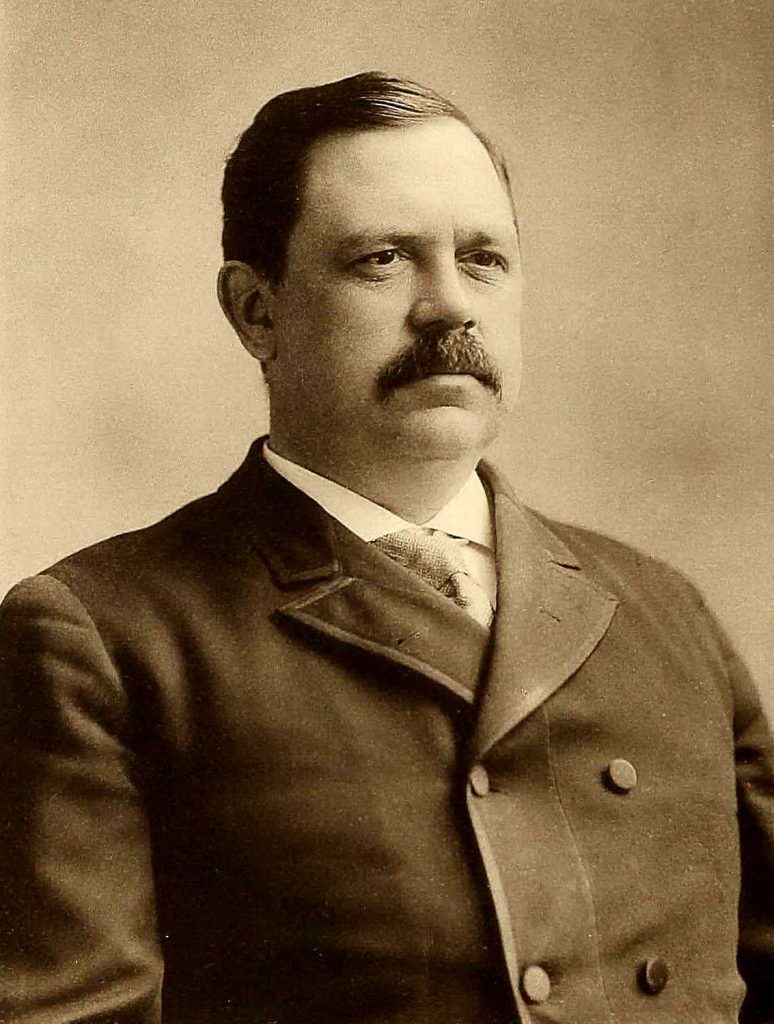
In 1895, a chemist by the name of Wilbur Olin Atwater was curious about the nutritional density of food. So curious, in fact, that he imported technology from Germany that allowed him to test the nutritional densities of different foods. In the 1896 report on his findings, Atwater had tested over 2600 different foodstuffs. Three years later, he and his team were able to test another 4000 foods.
He tested these foods to find out their measure of fats, carbohydrates, proteins, and calories. After running these tests and finding the technology successful, Atwater then created the respiration calorimeter to study how the body used or stored these nutrients. He studied the body both at rest and in motion.
Atwater also studied the various diets of people throughout the United States to see who had the most nutrient dense diet. Unfortunately, Atwater misinterpreted some of his data and stated that the ol’ meat, bread, and potatoes diet of New Englanders was the way to go in terms of comprehensive nutrition.
After his death in 1907, however, scientists who did their own testing realized that this diet actually led to a myriad of health problems due to nutritional deficiencies.
The Discovery of Vitamins

It was 1912 when Dr. Elmer V. McCollum “discovered” what it was that made certain foods healthier for human consumption than others.
Vitamins.
McCollum learned through his tests that there were various amounts of vitamins naturally included in food and that these were necessary to human survival. The first vitamin he found, he named “vitamin A,” the next he named “vitamin B,” and so on and so on.
Due to his findings, McCollum advocated for a diet not just filled with meat, potatoes, and bread, but one that also included a larger quantity of fruits, vegetables, and dairy products.
The Predecessors to Gluten-Free & Vegetarian
During WWI (1914-1918), this deep dive into nutritional science was temporarily halted. Future President of the United States, Herbert Hoover (1874-1964), who was then head of the United States Food Administration (USFA), created propaganda to urge Americans to lessen their consumption of staple ingredients like wheat, pork, beef, butter, and sugar. The boys on the front lines needed these staples.
Hoover’s USFA hired nutritionists and home economists to create recipes that could be made from alternative ingredients. These included rice flour bread, soybean croquettes, and pea loaves, among other recipes. Today this doesn’t seem strange or unfamiliar, but coming from the ol’ meat and potatoes time, this was rather strange and new.
After WWI, the restrictive practices of rationing lessened and a renewed emphasis was placed on science-based nutrition like never before in the United States.
Food & Nutrition in the 1920s
Between 1870 and 1920, the population of Americans who lived in cities grew astronomically from 10 million people to 54 million as rural inhabitants moved to the city. In addition to this movement throughout the country, 25 million people immigrated from other countries to the urban epicenters of the United States during that same period.
What caused this rapid movement of people to urban areas in the U.S.?
Jobs (and I don’t mean the turtlenecked Steve variety).
Movin’ to the Big City

“Public Health nursing is made available through child welfare services. Social Security Administration,” circa 1930, via the Franklin D. Roosevelt Library & Museum Digital Collection.
For the first time in U.S. history, more people lived in urban areas than rural areas at the start of the 1920s. The majority of Americans who moved to the cities were young adults. In the city, they found higher paying, less laborious work opportunities than those of their rural families. They were also able to live more technologically advanced lives as electricity, phone lines, and running water were prevalent in the city.
Don’t think that it was only young men who sought out new opportunities in the city, though. Young women who, in previous years, had rarely been allowed to leave their families behind, now moved to the city unaccompanied and independent. These young women fled the rural poverty that they had grown up with to seek out a better life for themselves, which meant finding employment in the city. By 1930, one in four women were employed.

Even though women were now able to find steady employment, this was viewed as a temporary state. Women were still expected to end their careers and marry as soon as possible. Though, with newfound independence, many women still chose to keep their jobs even if they married.
What Did these Busy, Young Urbanites Eat?
Since both partners in a marriage might end up working all day, there would be no one to stuck in the house to do the cooking and cleaning. Because of this, the food industry evolved to support the modern, busy lifestyles of young urbanites.
Food companies began producing frozen and packaged foods that were easy to prepare. Cookbooks of the time, like The Busy Woman’s Cookbook, or Cooking by the Clock (1925), greatly emphasized the use of dairy products, breads, and canned foods for people to cook quick, nutritious meals.
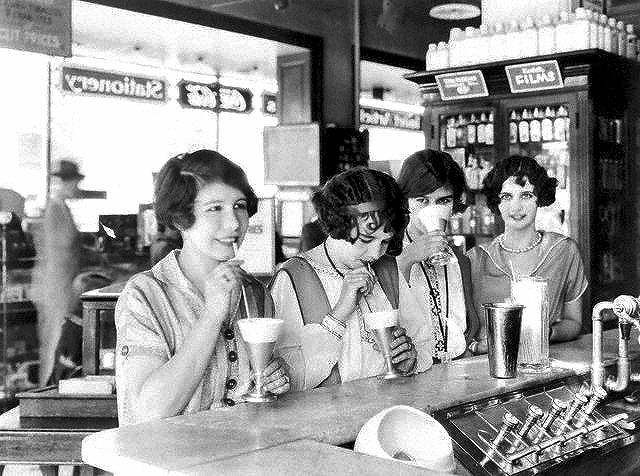
Going out to eat at restaurants also became more accessible to the everyday person than ever before. Previously, dining out was a long, time-consuming, and expensive pleasure which the rich mostly partook in. With the advancement of diners (also known as “lunch cars” in the 1920s), lunch counters, and delis, people were now able to enjoy a home-cooked meal in a cheaper, fast-paced, and casual environment.
Precursor to the Food Pyramid?
As stated in an article published in Good Housekeeping in 1926, the six points of nutrition that were to be met everyday in each person’s diet were:
- 1 pint of milk
- A serving of fresh fruit
- 1 serving of meat or a meat substitute, like cheese or eggs
- 1 additional egg
- 2 servings of non-starchy vegetables
- Any combination of breads, cereals, starchy veggies, desserts, or fats like butter or cream, that would make up the rest of the individual’s daily allotment.
Does this arrangement look familiar to you?
It should, because it was an early precursor to the traditional food pyramid! After WWI, nutritional scientists were able to point their focus back to the nutritional needs of the American people, however, their food pyramid doesn’t appear to have advanced too far in terms of nutrition. The diet suggested here was still quite heavy in wheat and potatoes, however, this version placed less importance on meat.
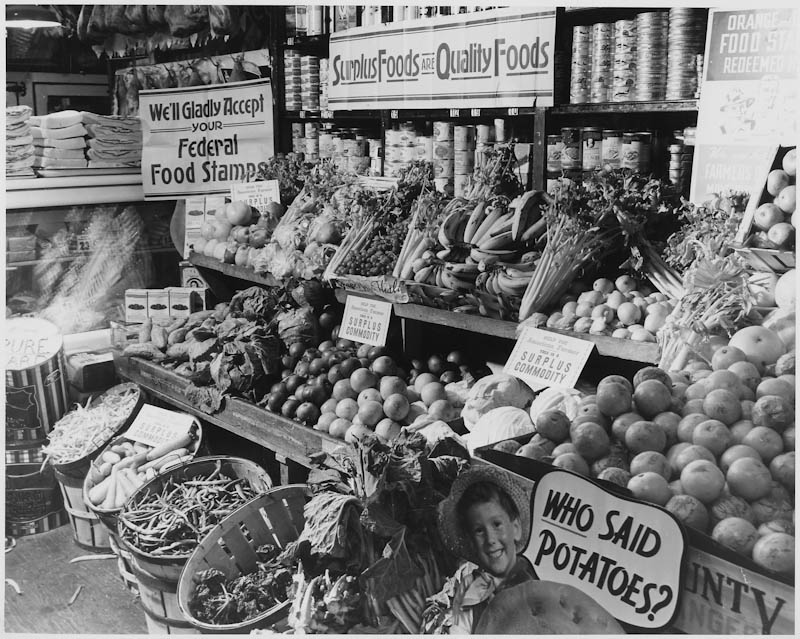
In addition to the myriad diets that poured out of the 1920s, Vegetarianism became all the rage as it was believed to be the healthier option for people’s nutritional needs. With the less-than-awesome cleaning standards in the meatpacking industry that were exposed in Upton Sinclair’s The Jungle, it’s easy to see how this was the case.
Nutrition & Food During the Great Depression
After the “Crash of 1929,” the economy in America fell apart.
By 1931, unemployment rates were at 23%. This is a very high figure, especially when considering that the national unemployment rate in 2019 was 3.6%.
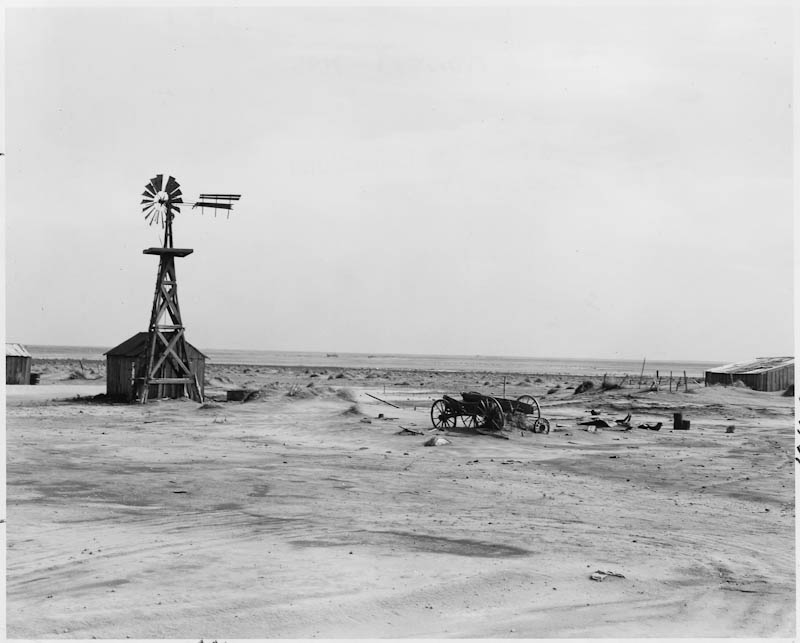
As if the Stock Market Crash wasn’t bad enough, droughts and floods in the “Dust Bowl” meant that farmers couldn’t produce as many crops as they had previously been able to do, making things look even more grim and depressing. Not only were the farmers unable to have enough crops to sell to make money, they barely had enough to feed their families.
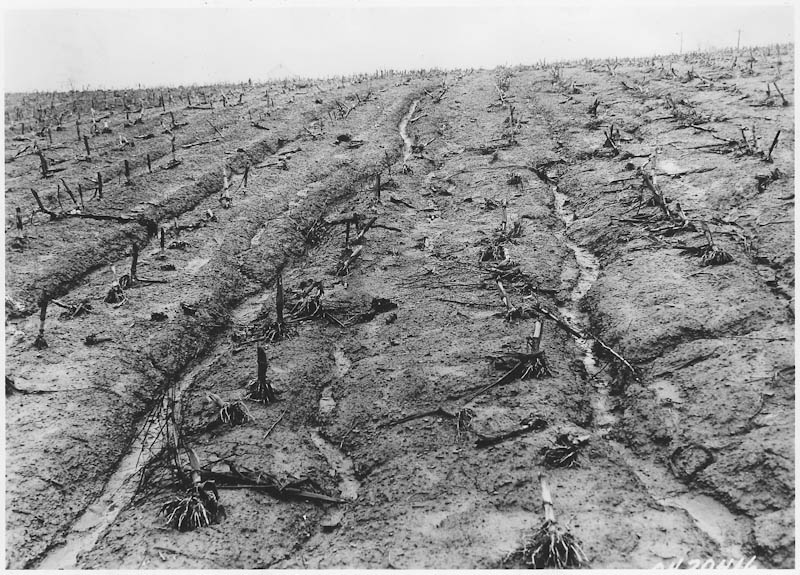
Because of this strain on money and resources, people had to be exceptionally thrifty in all manners of life. Articles of clothing that had holes were sewn and patched to be worn until they were threadbare, and meals were crafted from the trifecta ideal of cheap, filling, and nutritious.
Hot Dogs: the Other White Meat?
The same nutritional guidelines we saw in the Good Housekeeping article from 1926 were prevalent throughout the early 1930s. Meals were created mostly with milk, wheat, and starchy vegetables, like potatoes.

During the Great Depression, meat was a luxury item that few could afford, so even if they were able to purchase some at the butcher, it was typically the cheapest cut they could buy and the smallest amount of it. Recipes called for the bare essential amount of meat to ensure that this small amount would last for a few meals.
Hot dogs were an extremely popular meat replacement throughout the Great Depression. They show up as an ingredient in many recipes that would have typically required meat. Since real meat was very expensive, hot dogs, which were mostly meat, served as a filling, somewhat decent replacement.
Women who either lived in rural areas or had the amount of space needed, were able to have small gardens where they were able to grow a small amount of their own food. If they were really gung-ho or had room to spare, they could even have a few small animals, like chickens and hens, for meat and eggs.
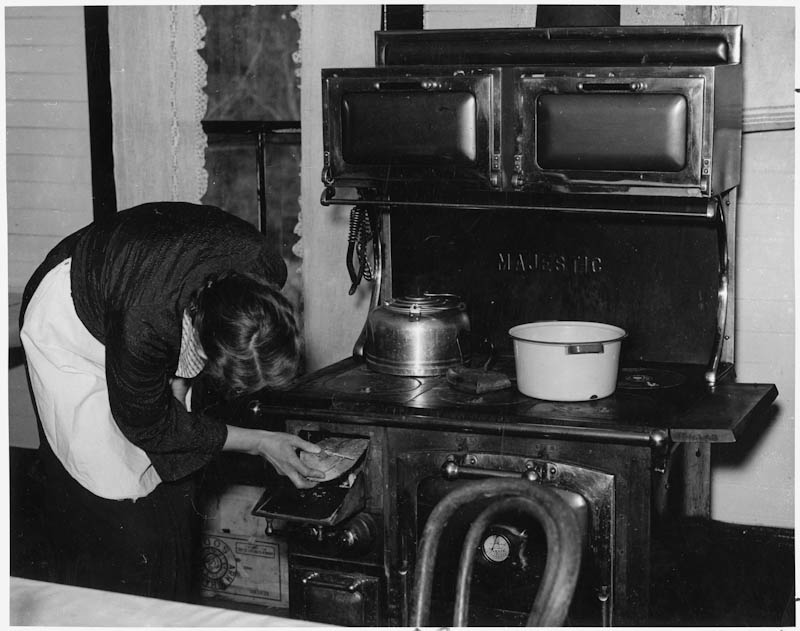
While traditional gender roles primarily saw men leave the house during the day to find employment, unemployed women were tasked with staying at home to do the mending, cleaning, sewing, and cooking. With limited resources, women had to be creative when coming up with recipes.
So, a lot of them turned to Aunt Sammy.
Advice from Aunt Sammy
Prior to the dire situation of the Great Depression, the United States Department of Agriculture (USDA) had created a matronly radio personality named Aunt Sammy, who was meant to be the wife of Uncle Sam. The 15-minute “Aunt Sammy” radio show was originally targeted toward rural homemakers. She would share recipe ideas and cooking tips on how to stretch every bit of food to feed a family.
The woman who voiced the Aunt Sammy character was actually a series of voices. Women were selected from every geographic region where the radio show was broadcast, so that Aunt Sammy would have an accent similar to the people in that area. The script that these women read, however, was crafted by 3 women from the United States Department of Agriculture (USDA): Ruth Van Deman, who wrote the recipes; Fanny Walker Yeatman, who researched for and tested the recipes; and Josephine Hemphill, who wrote Aunt Sammy’s dialogue.
Aunt Sammy first hit airwaves in 1926 and, by 1927, she was broadcast to millions of female listeners. By the time of the Great Depression, Aunt Sammy’s show increased in popularity, this time to women who used the Federal Emergency Relief Administration (FERA) program.
By 1933, Aunt Sammy was instructing recipients of FERA on how to use the ingredients that were distributed to their maximum potential. If cans of kidney beans were being distributed by FERA, then Aunt Sammy gave you 5 different recipes that you could make using a can of kidney beans.
A Quart of Milk a Day Keeps Hunger Away
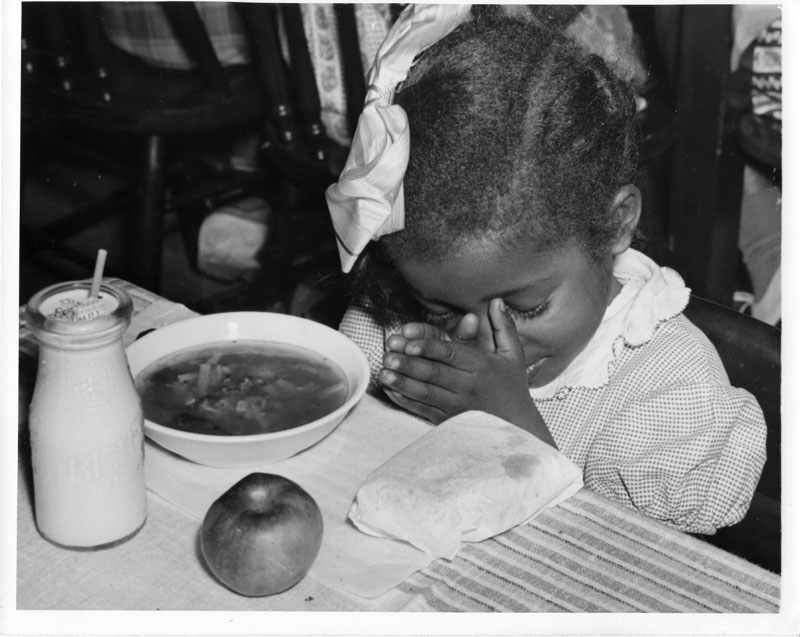
At the beginning of the 20th century, school lunches were instituted for children. Progressive government officials wanted to provide at least one nutritious meal per day to low income families. When the Great Depression hit, however, it wasn’t just the low-income children who were in need of nourishment. Middle class children, who now became low-income children, were also in need of meals as the economic situation worsened.
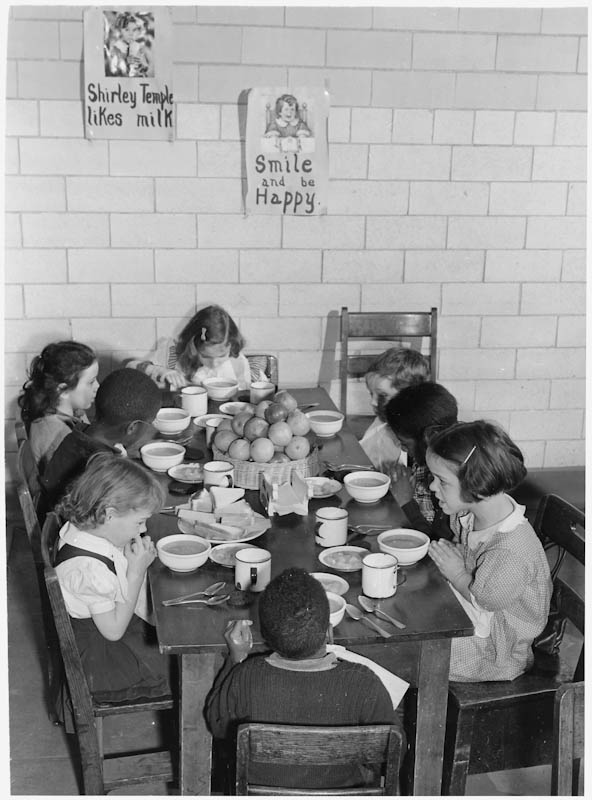
While school lunches were great in theory, they still lacked the vital nutrients that growing children needed. For children in urban public schools, a typical lunch could consist of pea soup with milk, spaghetti, rolls with butter, and, for dessert, chocolate pudding with a glass of milk.
That’s a lot of cow juice.
Since nutritionists placed so much importance on dairy, the government advised parents to feed their children up to a quart of milk per day. Not only was it believed to be nutritious, it was also more filling than water, causing it to be used in a majority of recipes.
Out of the Frying Pan & into Artillery Fire
By 1939, the struggles of the Great Depression and the Dust Bowl seceded. A new decade of struggle was just approaching, however, as WWII (1939-1945) was starting. As the 1940s had their own series of problems and misfortunes, the people of the 1940s were no stranger to being thrifty with their food and necessities. Many recipes that were common in the 1930s stuck around for the next decade.
Recipes from the Great Depression
The following recipes are just a small sampling of what was common or popular in 1930s America. These were featured in cookbooks and magazines of the time and promoted the use of cheap foods, often consisting of filling items like soups, noodles, and beans.
Since these recipes are from mainstream America, they do not feature recipes from immigrant communities, who cooked with cheap, nutritious, and filling ingredients. Spicy food was viewed as a stimulant by nutritional scientists, so consumption of these dishes was even more frowned upon.
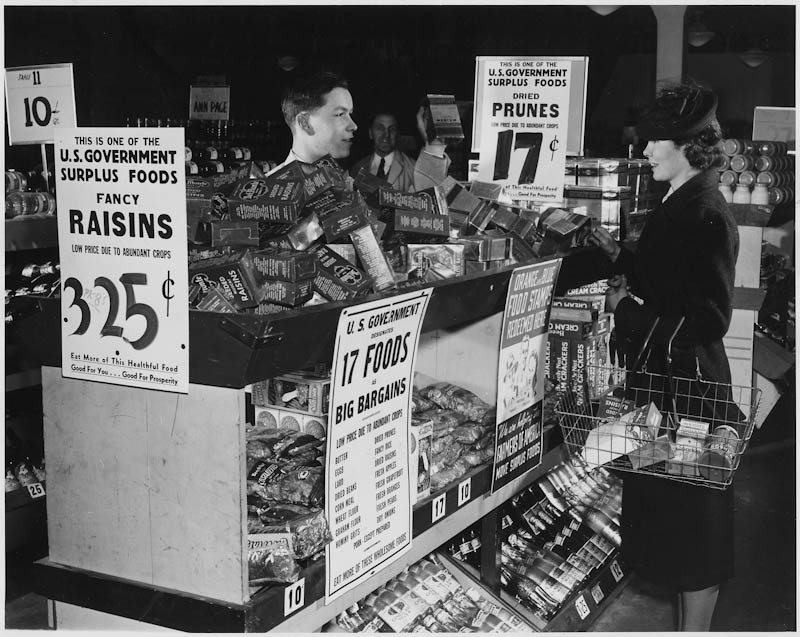
Word on the street is that we may be headed into another recession after the coronavirus, so I’m sharing these recipes that helped people survive through the Great Depression nearly a century ago. Hopefully they will, if nothing else, inspire you to extend the life of your pantry items as best as possible.
And, now, the recipes! 🙂
Popular Dishes That Can Stay in the 1930s
- Any type of casserole, especially bologna casserole.
- Creamed chicken on biscuits.
- Creamed chipped beef with toast points.
- This lovely dish was affectionately known as S.O.S., or “Shit on a Shingle” by military personnel during WWII. That tells you all you need to know.
- Peanut butter stuffed onion.
- The Sandwich Loaf.
- So, I’m actually torn on this one. On the one hand, it seems like a disgusting, odd, weird thing. On the other, this actually seems like a genius way to feed a group of people with minimal effort.
Popular 1930s Dishes We Still Eat Today
- Chili.
- Macaroni & Cheese.
- Potato Pancakes.
- Red Velvet Cake.
- Soups!
8 Delicious Recipes That Should Be Brought Back
I’ve split these up by time of day, but feel free to eat them whenever you’d like. Click on each recipe name to be brought to that exact recipe. 🙂
Breakfast
Lunch & Dinner
- Egg Drop Soup
- Garbage Plate, or “Pots and Hots”
- Hoover Stew
- Mulligan Stew
- Poor Man’s Meal
Dessert
Coffee Soup
Anyone who knows me knows that I love a great cup of coffee. And what better food to pair with coffee than a piece of toast? Granted, the consistency is a bit different, but hey, this jazzes things up a little bit!
The original recipe calls for:
- 1 cup of freshly brewed hot coffee
- 1 piece of thick-cut toast
- Sugar
- Cream
And the directions are exactly the same for both recipes. 🙂
Print
Coffee Soup (Gluten-Free, Vegan & Paleo)
- Prep Time: 5 minutes
- Cook Time: 2 minutes
- Total Time: 7 minutes
- Yield: 1 bowl 1x
- Category: Breakfast, Dessert
- Method: Baking
- Cuisine: American
Description
So, this will probably be my new Saturday morning treat, just FYI. What better food to pair with coffee than a piece of toast? It’s best to eat this quicker rather than later, especially if you’re a texture person like me.
Ingredients
- 1 cup freshly brewed organic coffee
- 1 piece of gluten-free toast
- Organic coconut sugar
- Califia Farms Better Half
Instructions
- Cut your toast into 1-inch pieces and place at the bottom of a bowl.
- Pour coffee over your toast.
- Stir in as much cream and sugar as you’d like.
- Make sure to eat it immediately or else the soggy bread becomes the stuff of nightmares.
Cold Milk Soup
Have you ever had banana ice cream? Have you ever had banana ice cream where the ice cream part melts and there are huge banana chunks floating around in your liquid ice cream?
This is exactly like that, but better.
The original recipe calls for regular milk, bananas, and sugar, but with the same process of combining.
Print
Cold Milk Soup (Gluten-Free, Vegan & Paleo)
- Prep Time: 1 minute
- Cook Time: 1 minute
- Total Time: 2 minutes
- Yield: 1 bowl 1x
- Category: Breakfast, Dessert
- Method: Baking
- Cuisine: American
Description
This recipe is super simple and makes a great after dinner treat if you don’t want to go all out with dessert!
Ingredients
- 1 organic banana, sliced into discs
- 1 cup Califia Farms Vanilla Better Half
- 1 tbsp. organic coconut sugar
Instructions
- Put your banana discs at the bottom of a bowl.
- Sprinkle with coconut sugar.
- Pour your Better Half over it and do what Bob Marley says and “stir it up.”
- Do you really need directions for this?!
Egg Drop Soup
Originally hailing from China, this super simple soup that traditionally consists of eggs whisked into boiling chicken broth, was popular in the Great Depression. With the addition of potatoes and onions, this soup becomes much more filling!
Print
Egg Drop Soup (Gluten-Free, Dairy-Free & Paleo)
- Prep Time: 5 minutes
- Cook Time: 15 minutes
- Total Time: 20 minutes
- Yield: Serves 2
- Category: Dinner, Side Dish
- Method: Simmering
- Cuisine: American
Description
This dish is pretty hearty because of the eggs. I’ve made this for dinner and it’s been satisfying enough for 2 people!
Ingredients
- 2 organic potatoes, cubed
- 1 cup organic onion, diced
- 1 bay leaf
- Salt and pepper
- 16 oz. organic chicken (or veggie) broth
- 4 eggs
Instructions
- Pour some olive oil into a pot. Add your potato and onion and slowly brown them until soft.
- Add the bay leaf, salt and pepper, and broth.
- Bring to a boil. Once boiling, crack the eggs into the pot and stir until scrambled.
- Serve with some gluten-free toast ’cause that shit is delicious.
Garbage Plate
The “Pots and Hots” part of this dish harkens back to the original iteration that was created in Rochester in 1918. “Pots” stands for potatoes, while “Hots” stands for hot dogs! The Garbage Plate is still something that you can get in Rochester at the original restaurant, Nick Tahou Hots.
Print
Garbage Plate, or “Pots and Hots” (Gluten-Free, Dairy-Free & Paleo)
- Prep Time: 15 minutes
- Cook Time: 5 minutes
- Total Time: 20 minutes
- Yield: About 2 plates of food
- Category: Lunch, Dinner, Late-Night Snack, Bar Food
- Method: Grilling
- Cuisine: American
Description
The “Pots and Hots” part of this dish harkens back to the original iteration that was created in Rochester in 1918. “Pots” stands for potatoes, while “Hots” stands for hot dogs! The Garbage Plate is still something that you can get in Rochester at the original restaurant, Nick Tahou Hots.
Ingredients
- French fries or home fries
- Hamburger patties or hot dogs
- Siete dairy-free queso
- Ketchup
- Mustard
- Chopped onions
Instructions
- Pile all of that deliciousness on top of each other starting with your choice of potato and moving down.
- Enjoy the epic meal that layeth before you.
Hoover Stew
During the Great Depression, President Herbert Hoover took a blasé approach toward the rest of the country starving by hosting elaborate dinners at the White House. In response to this show of great disrespect, the American people created “Hoover Stew” as a dig to that jerk-of-a-president.
Print
Hoover Stew (Gluten-Free, Dairy-Free & Paleo)
- Prep Time: 0 minutes
- Cook Time: ~20 minutes
- Total Time: ~20 minutes
- Yield: 1 large pot 1x
- Category: Dinner
- Method: Stewing, Simmering
- Cuisine: American
Description
Because President Herbert Hoover took a blasé approach toward the rest of the country starving by hosting elaborate dinners at the White House, the American people created “Hoover Stew” as a dig to that jerk-of-a-president.
Ingredients
- 2 cups of frozen organic veggies
- 2 cups gluten-free rice noodles
- 2– 15 oz. cans of diced tomatoes
- 1 package of organic all-beef hot dogs
Instructions
- Reanimate your frozen veggies (so, just thaw them out).
- Cook your noodles until al dente.
- While your noodles are cooking, cut your hot dogs into coin-sized pieces.
- Cook the hot dogs, thawed veggies, and diced tomatoes together in a pot.
- Simmer on low for about 10 minutes.
- Turn off heat, add your cooked noodles, and stir to combine.
- Serve immediately while giving your cardboard cut-out of President Hoover the finger.
Mulligan Stew
Mulligan Stew was created at the start of the 20th century by people who were homeless. Each person would pitch in an ingredient, whether some celery, a couple of carrots, or a scrap of meat. These ingredients would be simmered together in a pot and, voila, Mulligan Stew.
This dish became popular during the Great Depression for it’s “everything-but-the-kitchen-sink” vibe. If you don’t have the “right” ingredients, improvise! This dish is about survival and making do with what you have available.
Print
Mulligan Stew (Gluten-Free, Dairy-Free & Paleo)
- Prep Time: 20 minutes
- Cook Time: 70 minutes
- Total Time: 90 minutes
- Yield: 1 large pot 1x
- Category: Dinner
- Method: Stewing
- Cuisine: American
Description
Mulligan Stew was created at the start of the 20th century by people who were homeless. Each person would pitch in an ingredient, whether some celery, a couple of carrots, or a scrap of meat. These ingredients would be simmered together in a pot and, voila, Mulligan Stew.
Ingredients
- 2 tbsp. almond flour
- 1 lb. grass-fed beef brisket, cut into 1-inch cubes
- 1 tbsp. coconut oil
- ½ cup chopped onion
- 4 stalks celery, chopped
- 1 green pepper, chopped
- 3 cloves garlic, minced
- 16 oz. beef bone broth
- 1 can tomato paste
- 3 organic white sweet potatoes, cubed
- 3 organic carrots, cubed
- 1 tbsp. parsley
Instructions
- Pour the almond flour into a large bowl. Toss your beef cubes in the almond flour to evenly coat.
- In a large cast iron pot, heat the coconut oil over medium-high heat.
- Add your beef cubes and cook until brown. Once browned, remove your beef from the pot.
- Add your onion and bell peppers and sauté for about 5 minutes.
- Add the garlic, beef bone broth, tomato paste, potatoes, and carrots. Cook for 10 minutes.
- Stir in your browned beef and bring the stew to a boil.
- Reduce your heat to a simmer and cook for about 30-45 minutes.
- Serve immediately with some crusty gluten-free bread!
Poor Man’s Meal
For me, this seems like the quintessential dish of the Great Depression. It has the meat-replacement component (hot dogs), a carb (potatoes), and onions. What better combination of flavors and it’s so simple to make!
Print
Poor Man’s Meal (Gluten-Free, Dairy-Free & Paleo)
- Prep Time: 10 minutes
- Cook Time: 10 minutes
- Total Time: ~20 minutes
- Yield: Serves 2–3 people 1x
- Category: Lunch, Dinner
- Method: Braising
- Cuisine: American
Description
For me, this seems like the quintessential dish of the Great Depression. It has the meat-replacement component (hot dogs), a carb (potatoes), and onions. What better combination of flavors and it’s so simple to make!
Ingredients
- Organic olive oil
- 2 cups organic white sweet potatoes, cubed
- 1 cup organic yellow onion, cubed
- 1 package of organic all-beef hot dogs
- Salt & Pepper to taste
Instructions
- Heat your olive oil in a cast iron skillet over medium heat.
- Add in your potatoes and onions and fry for about 5-10 minutes, or until your potatoes have browned.
- While your potatoes and onions cook, slice your hot dogs into small discs.
- Add your hot dog discs to your potato and onion mixture and cook.
- Serve.
Vinegar Pie
While vinegar pie was a dish that was whipped up by pioneers in the Midwest during the 19th-century, it surged in popularity again once the Great Depression rolled around due to it’s extreme simplicity. I know the name doesn’t sound too appealing, but trust me. It tastes a bit like a lemon pie, due to the vinegar and the sweetness of the sugar.
Print
Vinegar Pie (Gluten-Free, Dairy-Free & Paleo)
- Prep Time: 20 minutes
- Cook Time: 45 minutes
- Total Time: 1 hour and 10 minutes
- Yield: 1 pie 1x
- Category: Dessert
- Method: Baking
- Cuisine: American
Description
While vinegar pie was a dish that was whipped up by pioneers in the Midwest during the 19th-century, it surged in popularity again once the Great Depression rolled around due to it’s extreme simplicity. I know the name doesn’t sound too appealing, but trust me. It tastes a bit like a lemon pie, due to the vinegar and the sweetness of the sugar.
Ingredients
For the crust:
- 1 cup almond flour
- ⅔ cup tapioca flour
- 2 tbsp. coconut flour
- ½ cup coconut oil
- 1 tsp. coconut sugar
- ½ tsp. fine grain sea salt
- 2 large eggs
For the filling:
- 1 cup coconut sugar
- ¼ cup coconut oil, melted and slightly cool
- 4 large eggs
- 2 tbsp. apple cider vinegar
- 1 tbsp. vanilla extract
Instructions
- Mix all the crust ingredients together, EXCEPT for the egg, to create thick crumbs. Then, add the egg until a dough forms.
- Gather the dough into a ball. Wrap it in plastic wrap, flatten into a disc, and chill until it firms up (about 30 minutes-1 hour).
- Preheat your oven to 350 degrees F.
- Remove your dough from the fridge and coat a glass pie dish with a generous amount of coconut oil.
- Gently press the dough into your greased-up pie dish.
- Pierce the bottom of the dough to let hot air escape.
- To make your filling, whisk all of the filling ingredients together.
- Pour the mixture into your pie crust.
- Bake for about 30-45 minutes, or until the center is golden brown and puffed.
- Let cool. Only serve once it’s totally chilled…just like us.
Notes
Make sure you let your pie sit and COMPLETELY COOL before cutting. Otherwise, it’ll crumble and be a big sloppy mess!
If you’re curious to learn more about the nutritional history of the Great Depression, then check out A Square Meal: A Culinary History of the Great Depression by Andrew Coe and Jane Ziegelman!
Show Me Your Meals!
I really hope things don’t become as dire as is predicted, but just in case they do, you are now prepared with a few new recipes.
Which ones are your favorite? What else have you tried that you are loving right now? Let me know in the comments!
And be sure to tag me on Instagram @amara_andrew to show me which Depression-era recipes you made! 🙂


Leave a Reply